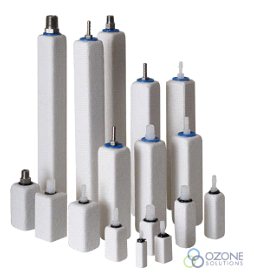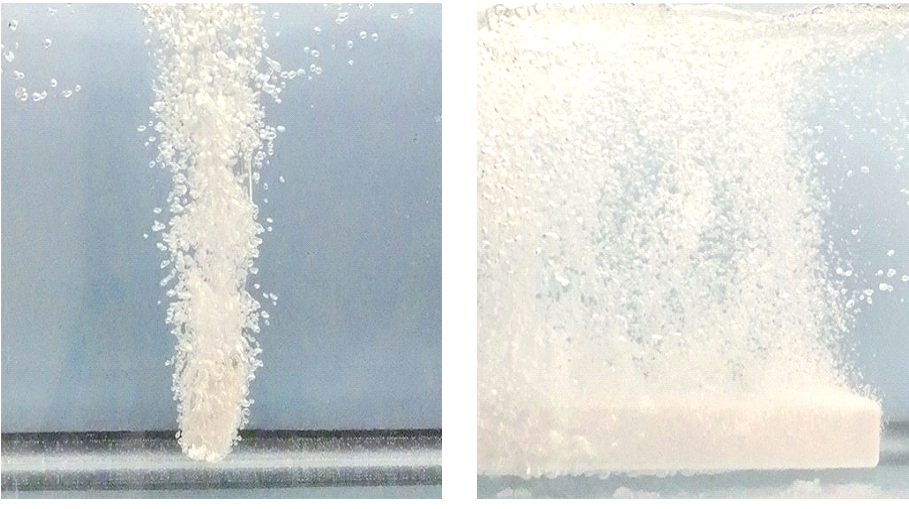Bubble Diffusion
Ozone is a gas, therefore proper gas/liquid contact mechanisms are critical to efficient system design. Bubble diffusers are a popular, inexpensive method to inject ozone into water. The ozone gas transfer area occurs immediately at the interface between the ozone bubble surface and the surrounding water.

Diffusers permit ozone gas to pass through a porous membrane thus creating many small ozone bubbles in the water, similar to a fish tank air stone. As the ozone bubble rises, the gas at the bubbles edge will transfer into the water. Using a diffuser requires enough pressure to overcome the height of the water and any restrictions in the diffusers due to hole size.
Advantages:
- Low Cost
- Easy to set-up
- Low energy - does not require a water pump
Disadvantages:
- Inefficient - ranges from 10-25% (dependent on water height)
- High water columns/vessels are typically required
- Difficult to use in pressurized water flows
- Diffuser pores can become plugged requring cleaning
- The diameter of a gas bubble has a dramatic impact on surface area as shown below!
- Be picky when it comes to selecting a bubble diffuser. It can mean the difference between success and failure.
- The transfer of ozone gas into water is directly related to its surface area (total bubble surface area).
- It is critical to prevent the water from back-flowing through the bubble diffuser and going into the ozone generator. The best method of prevention is to use multiple check valves (for redundancy) and a water trap.
4.8 ft² diameter = 14.8 inch / 1 Bubble
185 ft² diameter = 10 mm / 54,000 Bubbles
1,800 ft² diameter = 1 mm / 54,000 Bubbles
Conclusion: Additional smaller bubbles give you more mass transfer!

Click here to learn more about ozone transfer via bubble diffusion.
